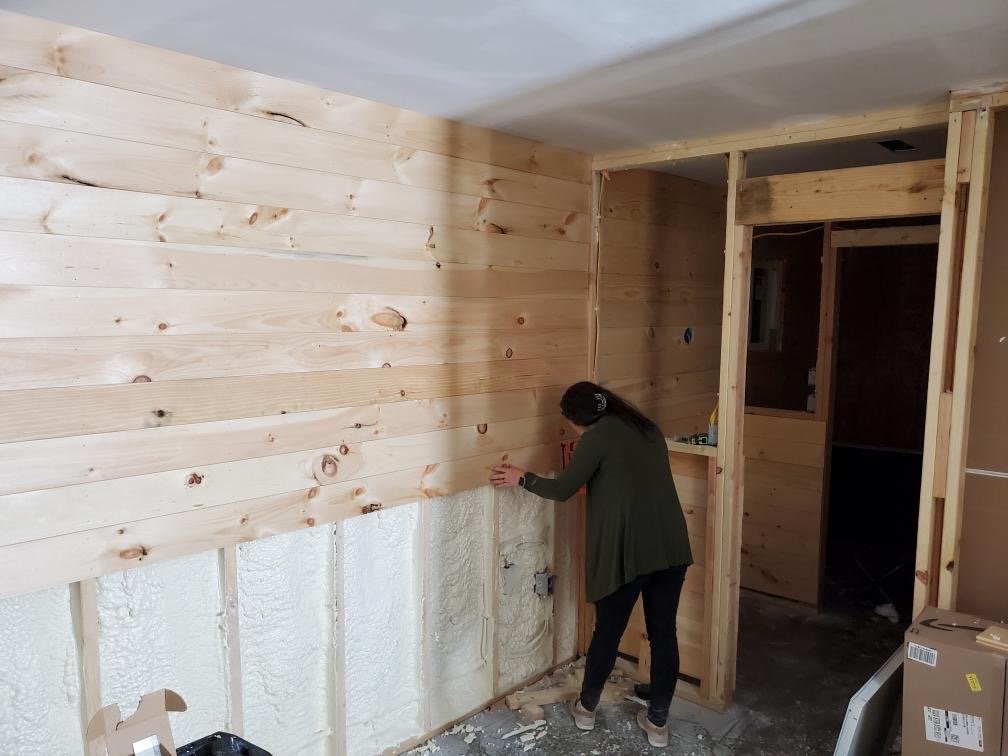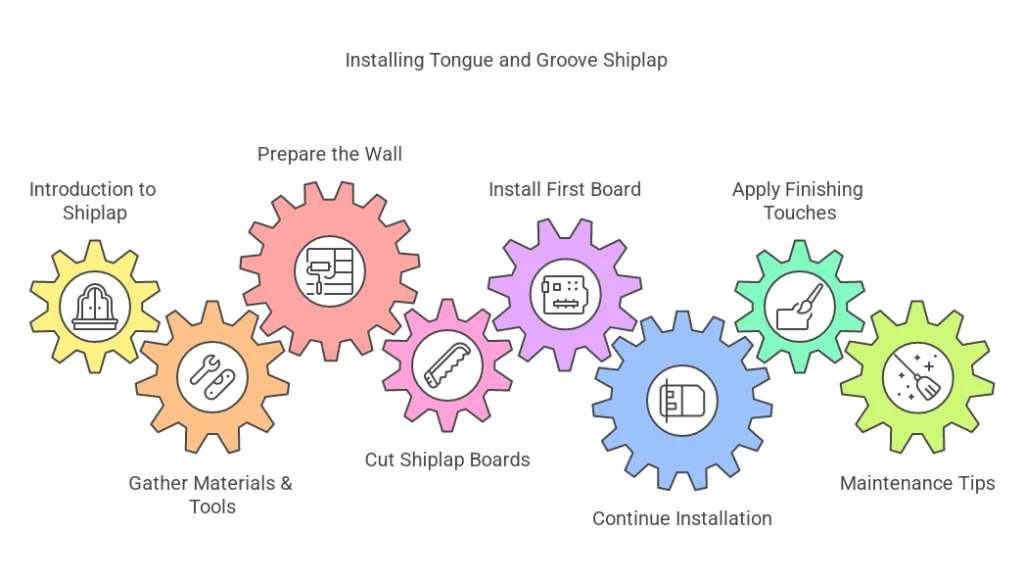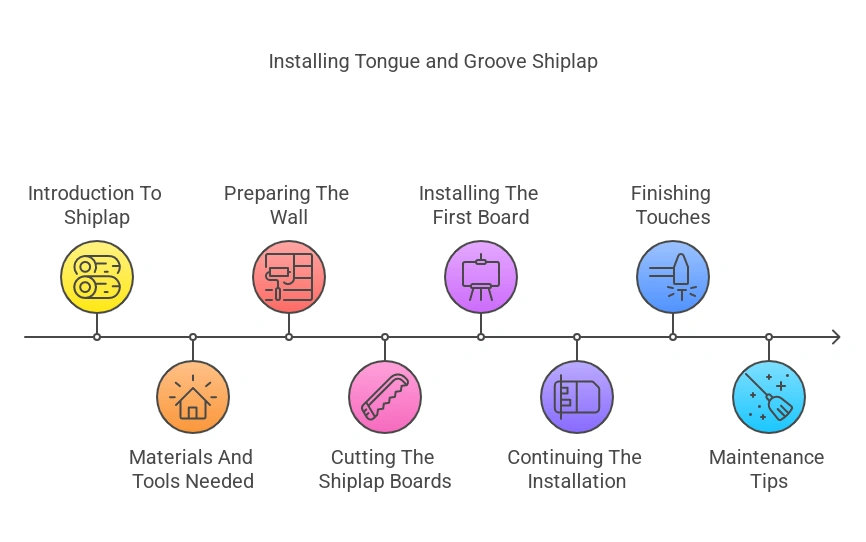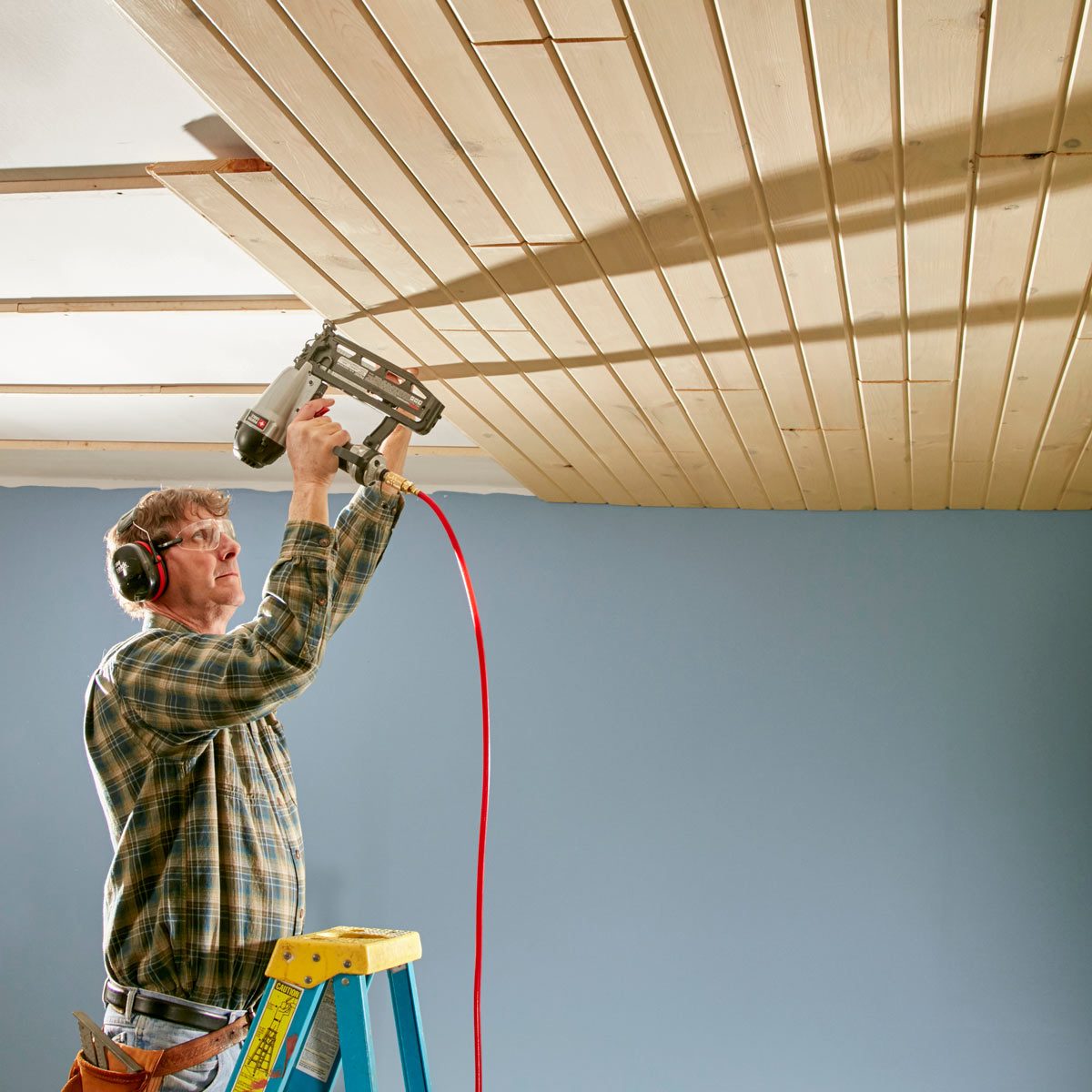Installing tongue and groove shiplap can transform a room. It’s a popular DIY project.
Shiplap provides a rustic, clean look to walls and ceilings. It’s easy to see why many homeowners love it. Whether you’re updating a living room or adding charm to a bedroom, tongue and groove shiplap is a great choice. This guide will walk you through the installation process step-by-step.
You’ll learn about the materials needed, the tools required, and the best practices for a flawless finish. By the end, you’ll have the confidence to tackle this project on your own. Get ready to add a touch of character to your space with tongue and groove shiplap!

Credit: www.kylumber.com
Introduction To Shiplap
Shiplap is a type of wood board. It has a special groove. This groove allows the boards to fit together. Shiplap can be used for walls and ceilings. It gives a rustic and charming look. People love it for its simple style. It can be painted or left natural. Shiplap is easy to install and looks great in any room.
Shiplap adds a warm feel to homes. It makes rooms look cozy. Shiplap is very durable. It can last for many years. This material is versatile. It fits in modern and traditional styles. Shiplap can also hide wall flaws. It is a good way to cover cracks or holes. Using shiplap boosts home value. It makes spaces more attractive.
Materials And Tools Needed
Gather essential tools like a saw, hammer, and level. Purchase tongue and groove shiplap boards, nails, and a measuring tape.
Essential Materials
You need shiplap boards. Make sure to measure the area first. This helps you buy the right amount. Also, get nails or adhesive to secure the boards. You might need some paint or stain if you want a different color. Finally, don’t forget the primer if your shiplap is unfinished.
Required Tools
Gather a measuring tape to measure your space. A level helps keep the boards straight. You will also need a saw to cut the boards to fit. A hammer or a nail gun is essential for nailing the boards. Don’t forget sandpaper to smooth the edges. A pencil is useful for marking cuts. Finally, have a paintbrush or roller if you plan to paint or stain the shiplap.

Preparing The Wall
First, remove any dirt and dust. Use a damp cloth to wipe the wall. Ensure the wall is dry before you start. Check for any loose paint or wallpaper. Scrape off any loose parts. Fill any holes or cracks with spackle. Let the spackle dry and then sand it smooth. A clean surface helps the shiplap stick better.
Measure the height and width of the wall. Use a tape measure for accuracy. Mark the center point of the wall. This is where you will start. Draw a straight line from top to bottom. Use a level to ensure the line is straight. Mark where each shiplap board will go. This helps you plan the layout. Accurate measurements are key to a smooth installation.
Cutting The Shiplap Boards
Cut the shiplap boards to fit the desired space. Use a saw for precise edges. Ensure each board aligns perfectly for a seamless look.
Measuring The Boards
Measure each wall. Write down the length. Use a tape measure. Make sure to measure twice. This will help avoid mistakes. It’s always better to be precise. Cutting errors can be costly.
Using A Saw
Use a saw to cut the boards. A circular saw is good. A miter saw is even better. Always wear safety goggles. These will protect your eyes. Cut slowly and carefully. Ensure all cuts are straight. This ensures a snug fit. Check each piece after cutting. Make sure each is the right length.

Installing The First Board
Begin by measuring and cutting the shiplap board to fit the wall. Place the first board at the bottom of the wall, ensuring it is level. Secure it with nails or screws.
Positioning The First Board
Pick a corner to start. Place the first board with the groove side down. Ensure it is level. Use a level tool to double-check. This will make sure the board is straight. An uneven start can affect the whole wall. If needed, use shims to adjust the board. This step is crucial for a good finish.
Securing The Board
Once positioned, secure the board. Use nails or a nail gun. Place nails at the top and bottom. This will hold the board firmly. Make sure the nails are not too close to the edge. This prevents splitting. Keep nails evenly spaced. A good rule is every 12 inches. This ensures the board stays in place.

Credit: www.familyhandyman.com
Continuing The Installation
Secure each shiplap board firmly, ensuring tongues fit into grooves. Align boards evenly and nail into place. Continue until the wall is covered.
Aligning The Boards
Make sure each board is straight. Use a level to check. Boards must fit snugly. This keeps gaps away. Hold the board at an angle. Slide the tongue into the groove. Push until it clicks. Check the alignment again. Adjust if needed. This ensures a smooth finish.
Nailing The Boards
Place nails at the board’s edges. Use a nail gun for speed. Nails should go through the tongue. This hides them from view. Start at one end and work across. Keep nails evenly spaced. This secures the board well. Check the board after nailing. Make sure it’s tight. Repeat for each board.
Finishing Touches
Installing tongue and groove shiplap adds charm to any room. Start by measuring and cutting the boards. Secure each piece by nailing through the tongue.
Filling Nail Holes
Filling nail holes is simple. Use wood filler to cover the holes. This step hides the nails. It makes the shiplap look smooth. Press the filler into the holes. Let it dry. Sand the area lightly. This blends the filler with the wood. Your wall will look neat and clean.
Applying Paint Or Stain
Choose paint or stain. Decide the finish you want. Paint gives a solid color. Stain shows the wood grain. Both protect the wood. Use a brush or roller. Apply in long strokes. Cover all areas evenly. Let the first coat dry. Add a second coat if needed. This ensures a good finish.
Maintenance Tips
Installing tongue and groove shiplap can transform your space. Begin by measuring the wall accurately. Then, nail each shiplap board securely.
Cleaning Shiplap Walls
Dust the shiplap walls every week. Use a soft cloth or a duster. For sticky spots, use a damp cloth. Add a mild soap to water. Wipe gently to avoid scratches. Dry the wall with a towel. Do not use harsh cleaners. They can damage the finish.
Preventing Damage
Keep furniture away from the walls. This avoids scratches and dents. Fix any leaks quickly. Water can warp the wood. Use a dehumidifier if the room is damp. This keeps the wood dry. Check for pests often. Termites can harm shiplap. Treat the wood with a safe pest control product.

Credit: midcountyjournal.com
Frequently Asked Questions
What Tools Are Needed For Shiplap Installation?
For shiplap installation, you’ll need a tape measure, saw, level, hammer, nails, and adhesive.
Can Shiplap Be Installed Over Drywall?
Yes, you can install shiplap directly over drywall. Ensure the surface is clean and smooth.
How Do I Prepare The Wall?
Clean the wall, fill holes, and ensure it’s level. Sand any rough spots for a smooth surface.
Should I Paint Shiplap Before Installing?
Painting shiplap before installation can save time. It ensures even coverage and easier touch-ups.
Conclusion
Installing tongue and groove shiplap can transform any space. The process is straightforward. With the right tools, you can do it yourself. Measure twice, cut once. Secure each board properly. Always ensure the grooves fit tightly. This technique adds charm to walls or ceilings.
Your home will feel cozier and more stylish. Give it a try and enjoy the results.

